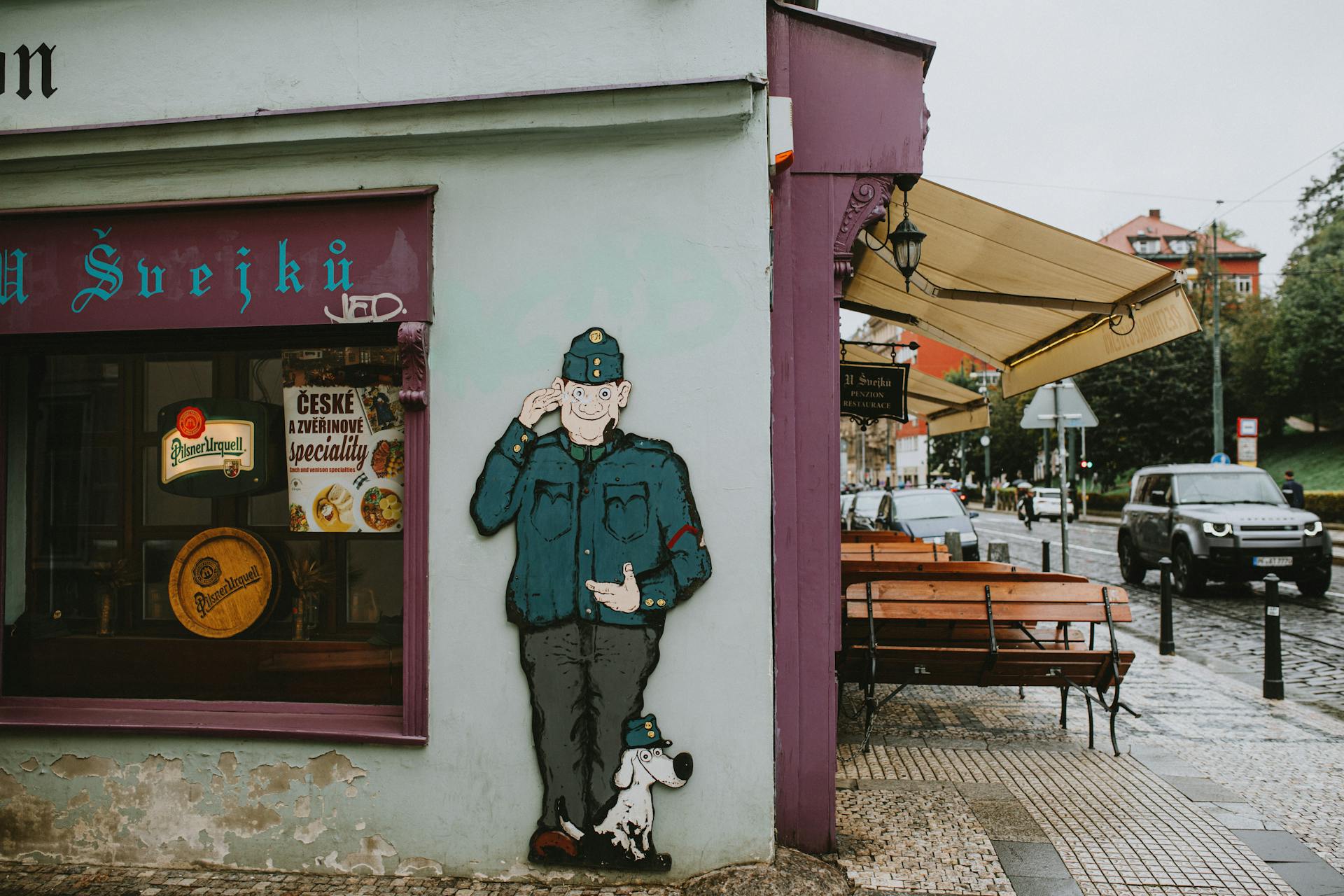
Horrie the Wog Dog's journey from war to legend is a remarkable one. Horrie was a Koolie crossbreed dog who served with the Australian Army in World War II.
He was found on the streets of Egypt and adopted by the soldiers, who named him Horrie the Wog Dog. Horrie quickly became a beloved member of the unit.
Horrie's time in the war was marked by his bravery and loyalty to his soldiers. He was known to have accompanied them on patrol and even helped to locate wounded comrades.
If this caught your attention, see: Smoky (war Dog)
Horrie's Story
Horrie was befriended as a puppy by Australian soldier Private Jim Moody in 1941, in the Ikingi Maryut area of Egypt.
He was a quick learner, described by his owner as "intelligent and easily trained".
Horrie became the unofficial mascot of Moody's unit, the 2/1st Machine Gun Battalion, and followed them on various campaigns.
He even got a coat to keep him warm in Syria's harsh cold, cut from a soldier's service dress tunic.
Horrie's skills went beyond being a loyal companion - he was employed as an air sentry, alerting troops to approaching enemy aircraft.
The dog's bravery was put to the test when the troopship Costa Rica was sunk, and Horrie managed to survive.
He later made it to Crete, where he was wounded by a bomb blast, but still managed to make it through the ordeal.
Identification and Quarantine
Horrie's story was about to be published in a book by Ion Idriess, which alerted quarantine officials to the dog's history.
They were adamant that Moody had to surrender Horrie, who was destroyed on 12 March 1945.
A look-alike dog was allegedly surrendered in Horrie's place, according to Anthony Hill's book Animal heroes.
Horrie's uniform and the travelling pack used to smuggle him into Australia are included in the Memorial's collection.
Books
Horrie's story has been immortalized in several books.
Ion Idriess wrote a book about Horrie in 1948, titled "Horrie the Wog-Dog: With the A.I.F. in Egypt, Greece, Crete and Palestine", using material provided by Jim Moody.
Horrie is also the subject of "Horrie the War Dog" written by Roland Perry, published in 2013.
Horrie's story is mentioned in "The Long Carry: A History of the 2/1 Australian Machine Gun Battalion 1939–46" written by Philip Hocking and published in 1997.
Anthony Hill wrote "Animal Heroes", a book that includes Horrie's story.
Jim Moody's Role
Jim Moody's role in the story of Horrie the Wog Dog is a significant one. He was a fellow prisoner of war who befriended Horrie and Sooey, the two dogs that accompanied them during their imprisonment in Singapore.
Jim Moody was a key figure in the survival of these dogs, providing them with food and care.
Frequently Asked Questions
What happened to Horrie the War Dog?
Horrie the War Dog's fate is disputed, with some claiming he was destroyed in 1945 and others suggesting he survived and lived out his life near Corryong. The truth behind his survival remains unclear and is a topic of ongoing debate.
What is Horrie the wog dog?
Horrie the Wog Dog was a white Egyptian terrier cross puppy found by a soldier in the Western Desert during World War II. He became a beloved mascot for the 2/1 Machine Gun Battalion.
Sources
- https://en.wikipedia.org/wiki/Horrie_the_Wog_Dog
- https://www.awm.gov.au/articles/encyclopedia/horrie
- https://www.readings.com.au/product/9781925416992/horrie-the-wog-dog--ion-idriess--2017--9781925416992
- https://www.awm.gov.au/collection/C20313
- https://www.smh.com.au/opinion/how-horrie-the-war-dog-and-jim-moody-his-rescuer-got-no-compassion-20170427-gvtthn.html
Featured Images: pexels.com


